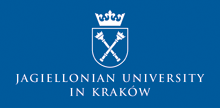Speaker
Description
Purpose
Knowledge of stopping power in various materials used in the proton therapy is essential for the correct estimation of dose distribution in the patient. Differences between materials result from different cross –sections for interaction of primary protons and production of secondary particles from non-elastic nuclear reactions. One of the most commonly used parameters for characterizing a given material is Water Equivalent Thickness (WET) and corresponding Water Equivalent Ratio (WER). WER is defined as the dimensionless ratio between mass thickness of water (in g/cm2) which causes the same energy loss of the proton beam as in given material and given material mass thickness (in g/cm2).
Materials and Methods
In this work WER of three selected materials – thermoplastics: Polylactic Acid (PLA), Acrylonitrilebutadiene Styrene (ABS) and Polyethylene Terephthalate Glycol (PETG) - commonly used in additive manufacturing technology was measured by a passive proton beam produced in AIC-144 cyclotron at the Institute of Nuclear Physics PAN in Krakow and Marcus chamber type 23343. Three plates with different thicknesses of 0.5, 1 and 2 cm were prepared for each material. For the PLA material, the influence of the printing direction on the Bragg peak parameters was also analyzed - an additional set of three plates for another printing plane was printed. Measured results were then compared with that predicted by treatment planning system (TPS) and with Monte Carlo simulation performed by means of the FLUKA code. Simulations were performed for theoretical elemental compositions of the tested materials. The Bragg peak parameters were also compared, i.e. residual range 90% (R90), full width at half maximum (FWHM) and distall fall-off (DFO).
Results
The agreement within 0.5-1% was found between results obtained from the measurement and the Monte Carlo simulation. Discrepancies may result from using in simulations nominal compositions of materials, not confirmed by chemical analysis. 3-5% differences were observed in the value of the WER parameter between measurement and the WER value obtained from TPS based on the calibration curve.
Conclusions
It was concluded that the application of 3D printing materials in proton therapy is possible and safe. However, the high precision requirements in radiotherapy make it necessary to overwrite in the treatment planning system the printed material with the known value of Hounsfield Units (HU), in order to obtain the WER value in accordance with the measurements. The known elemental compositions are similar to the composition of human tissues, so they can be treated as part of the patient during preparing treatment plans. However, a good knowledge of different material parameters is needed before being applied to radiotherapy treatments.

